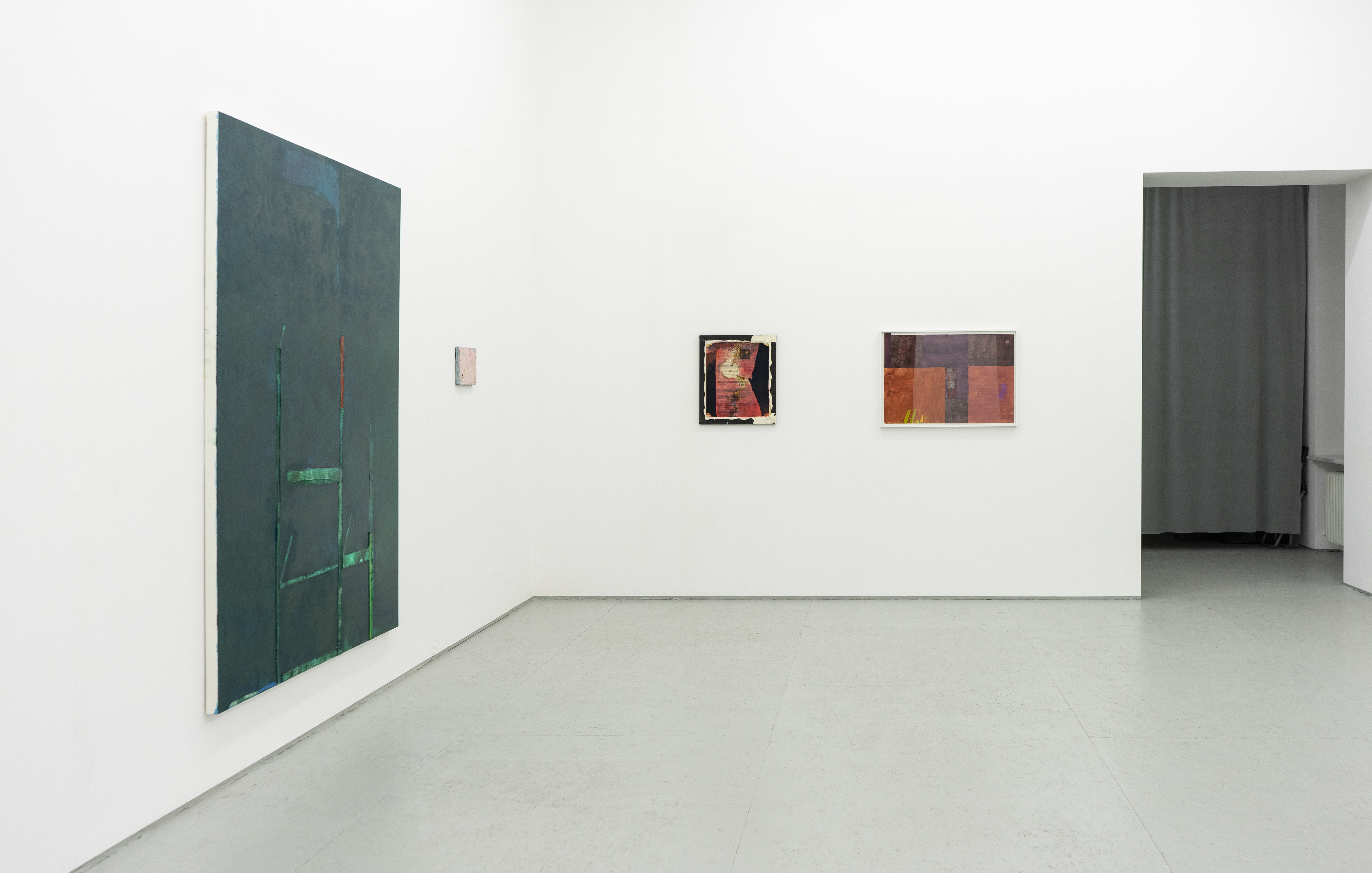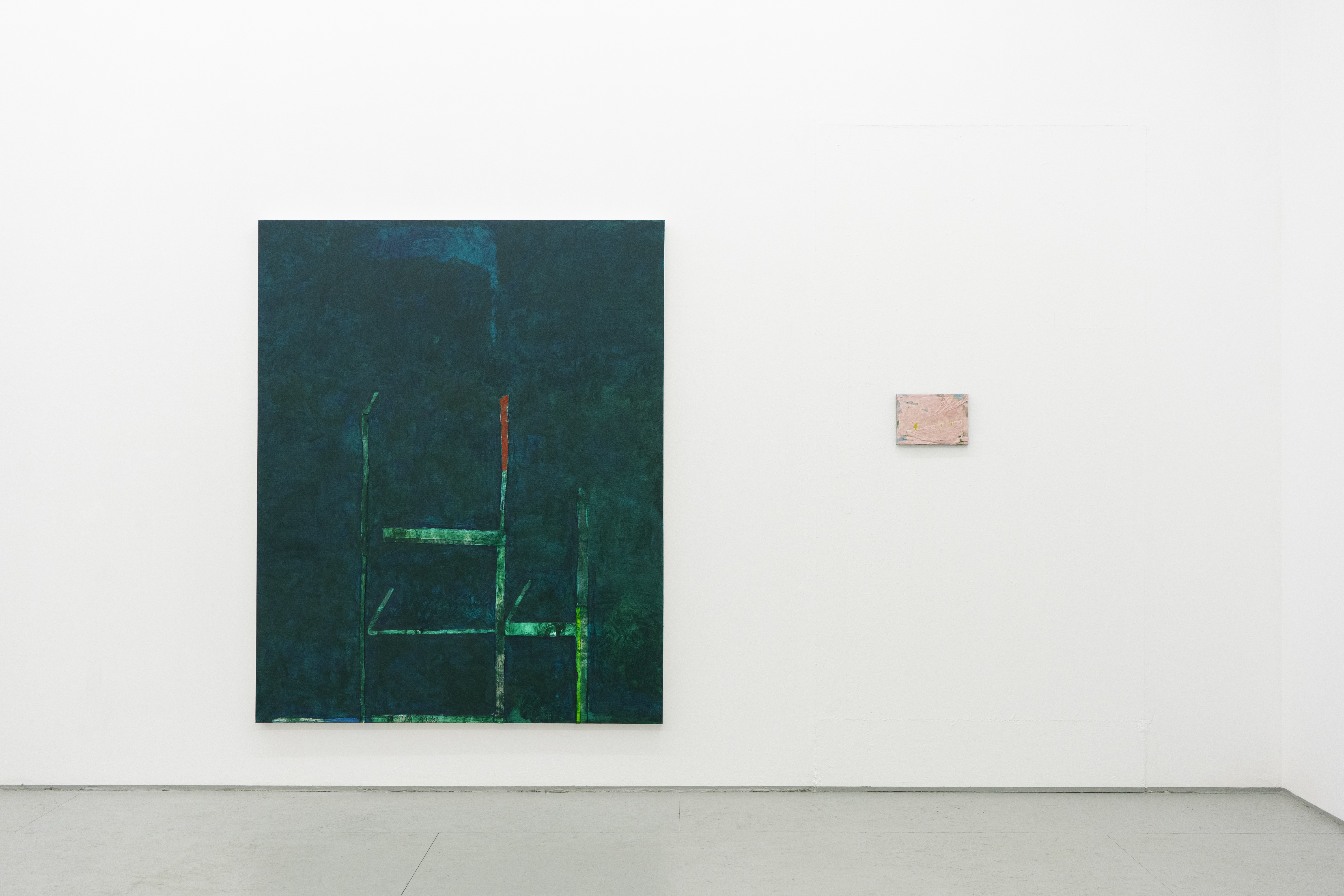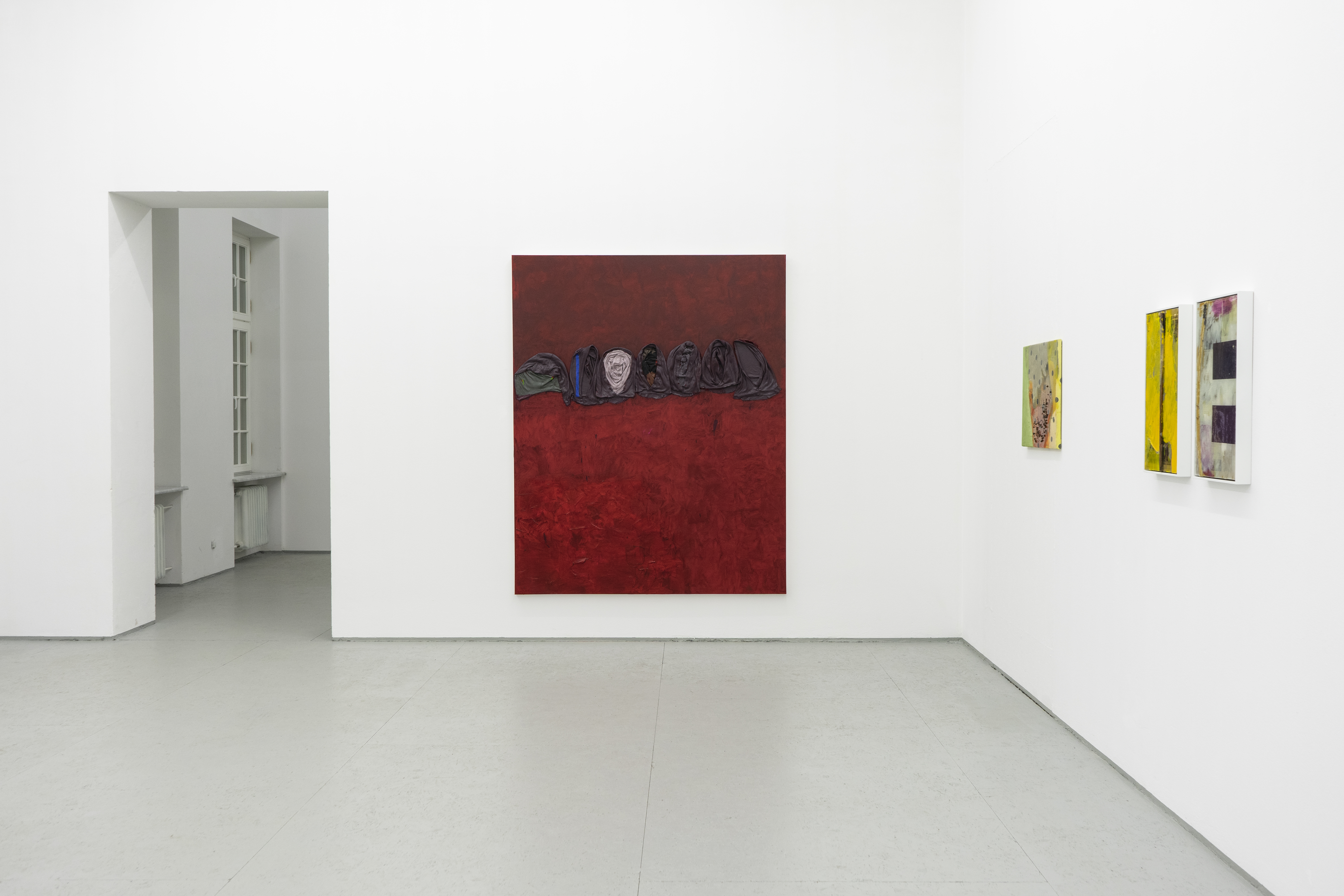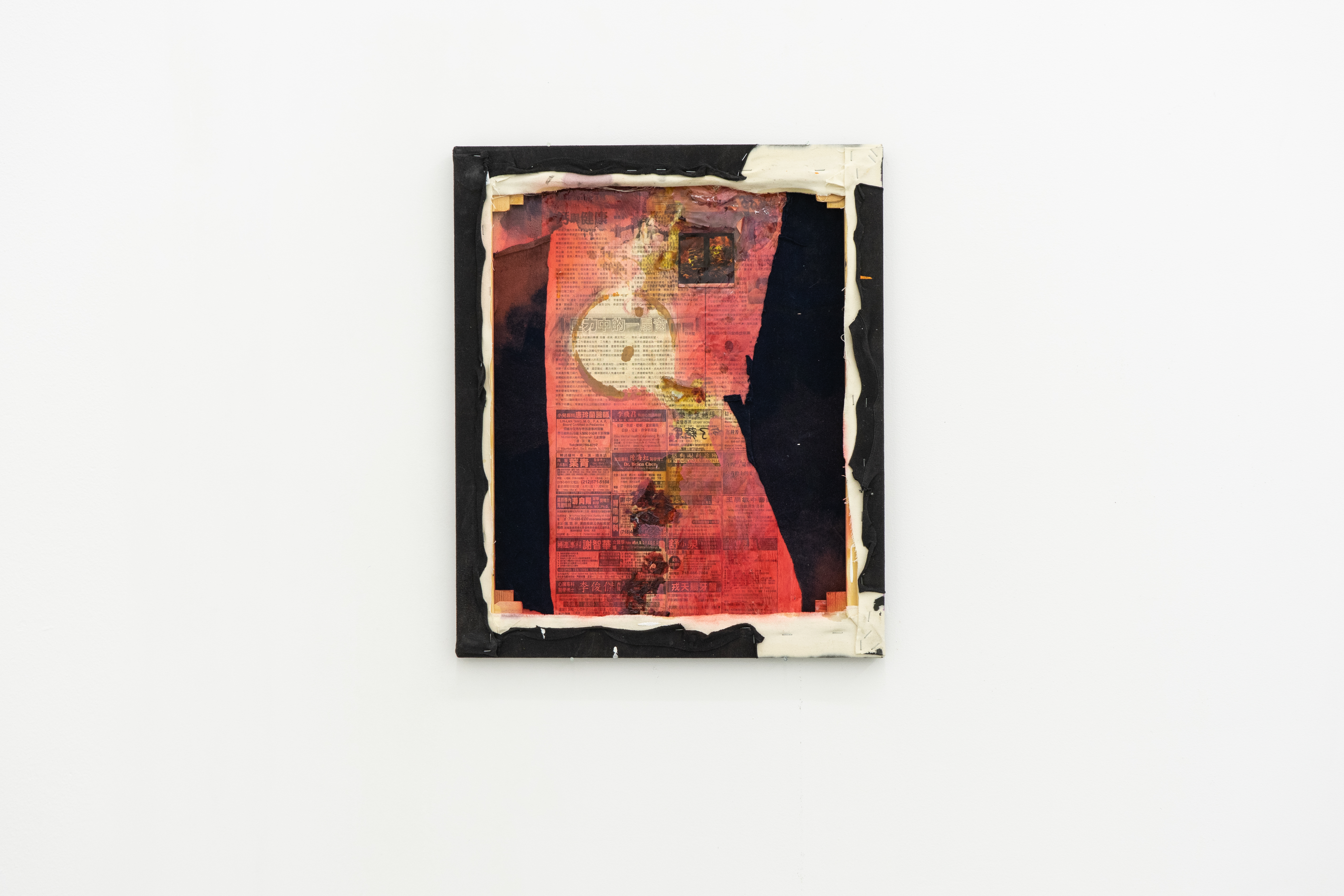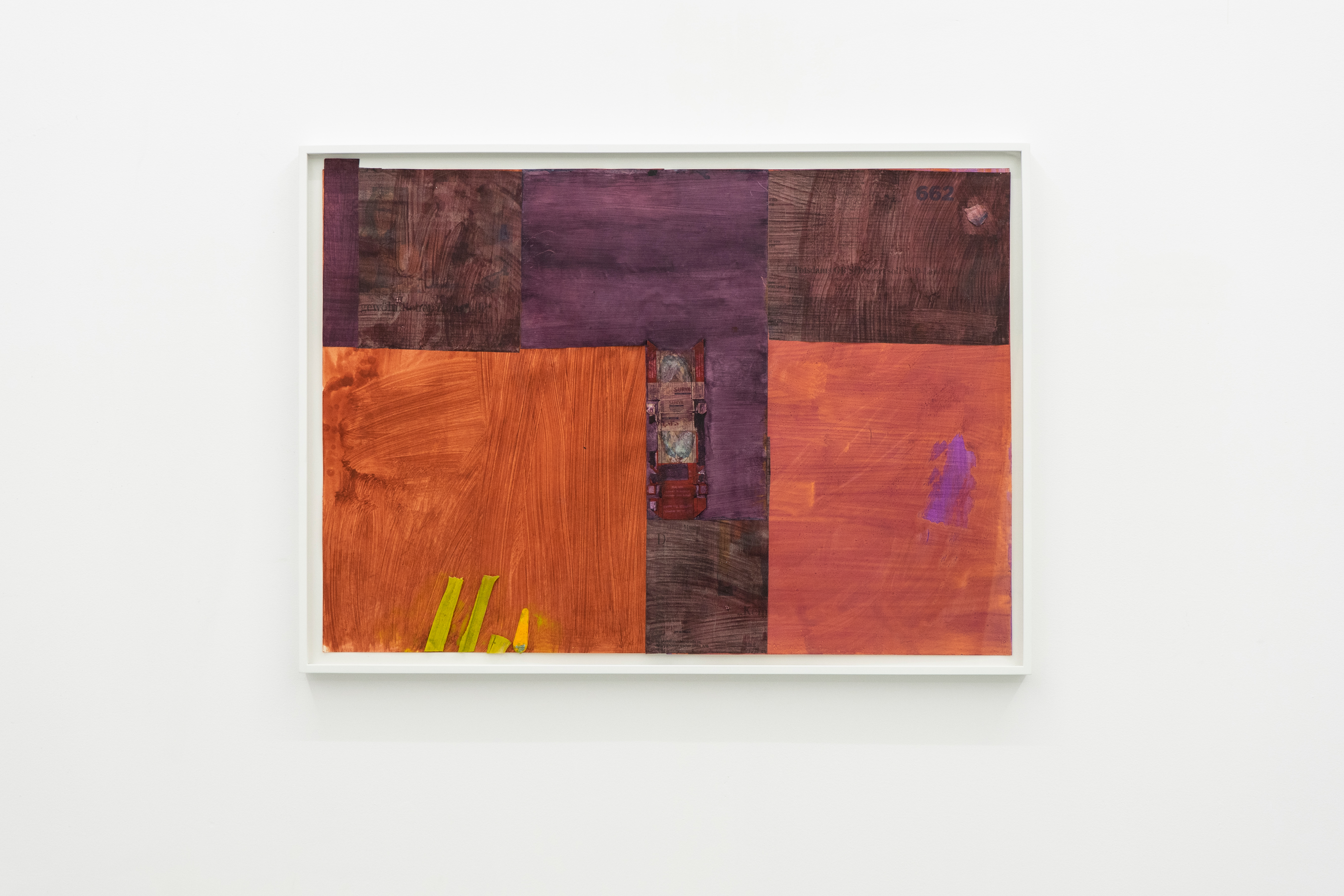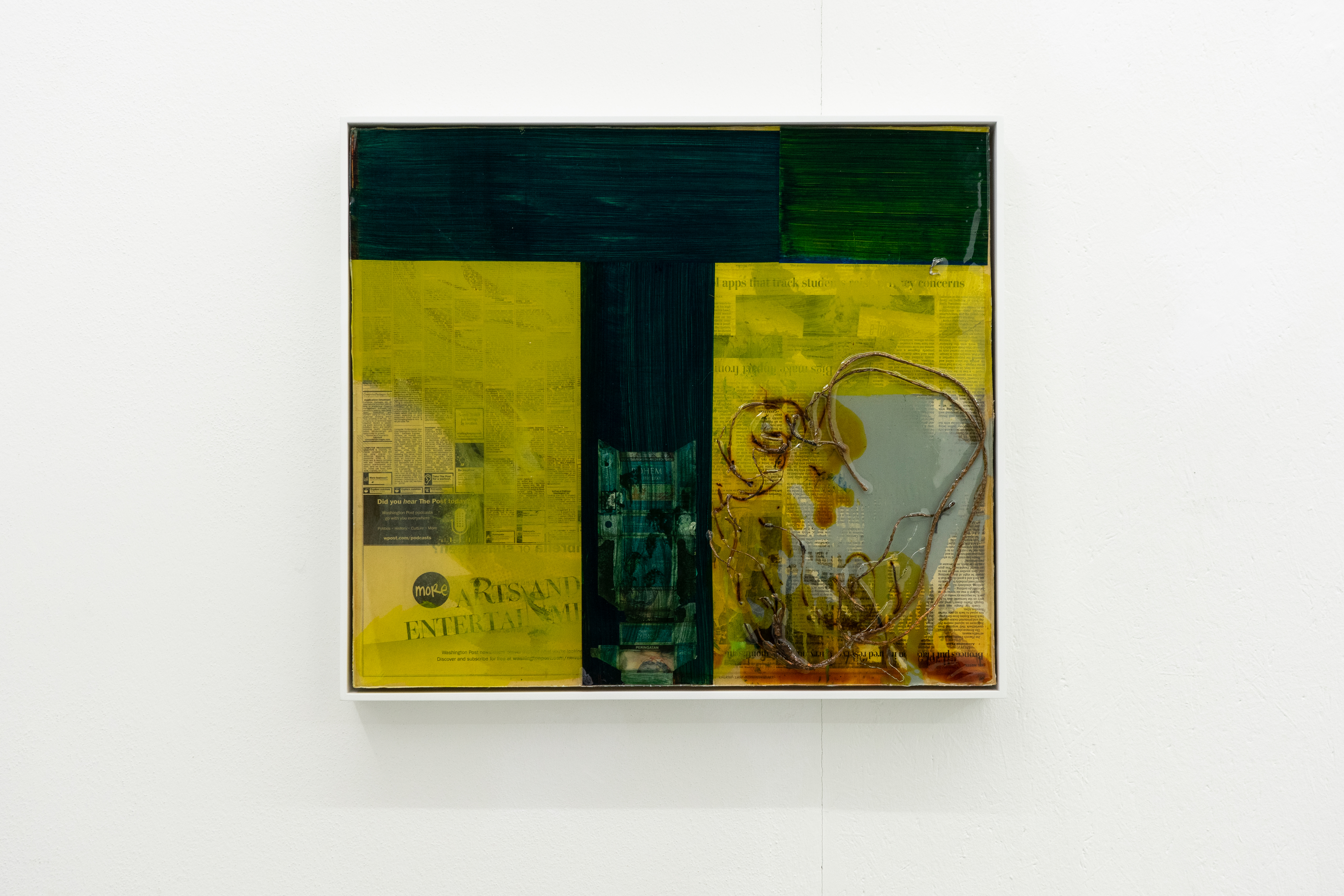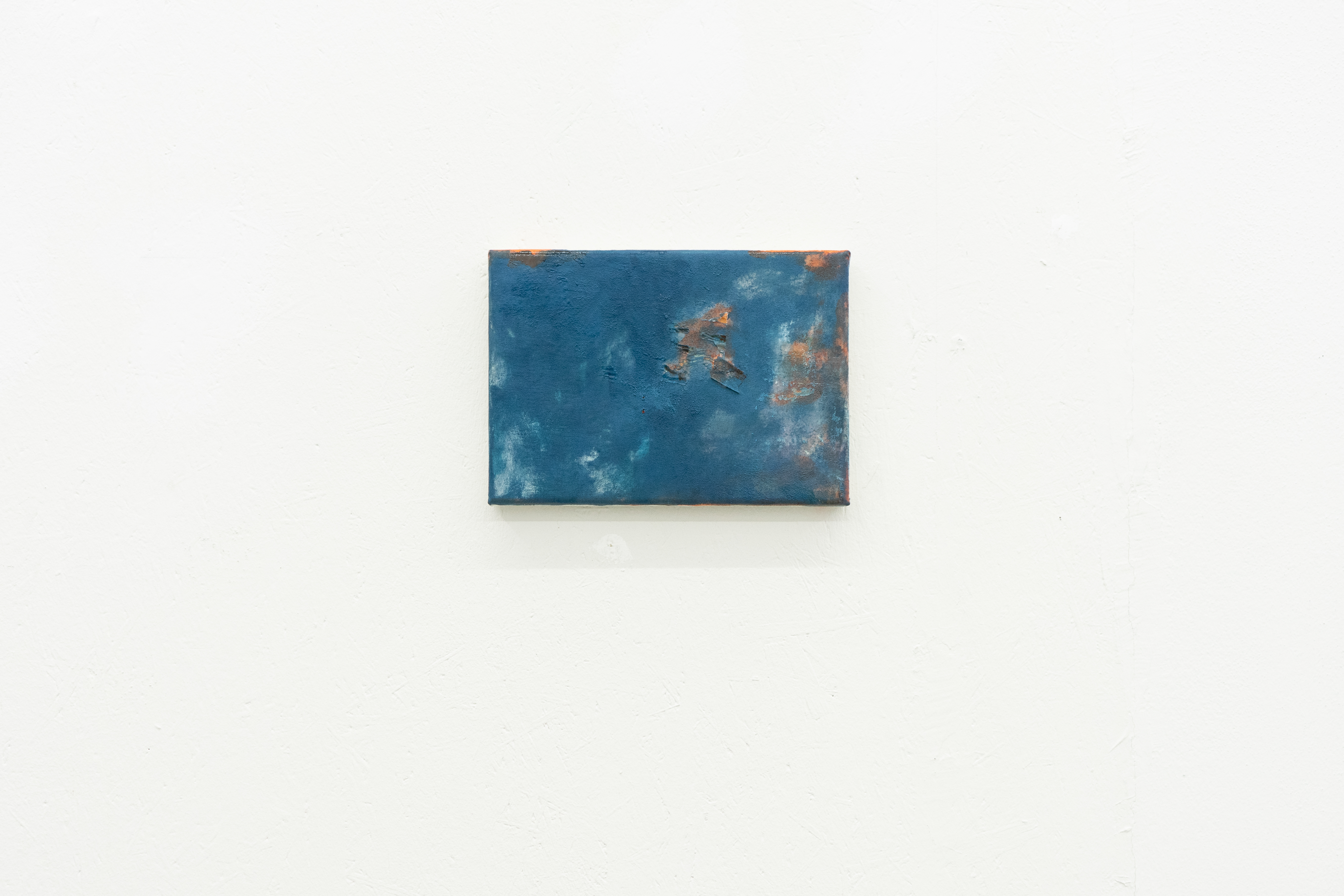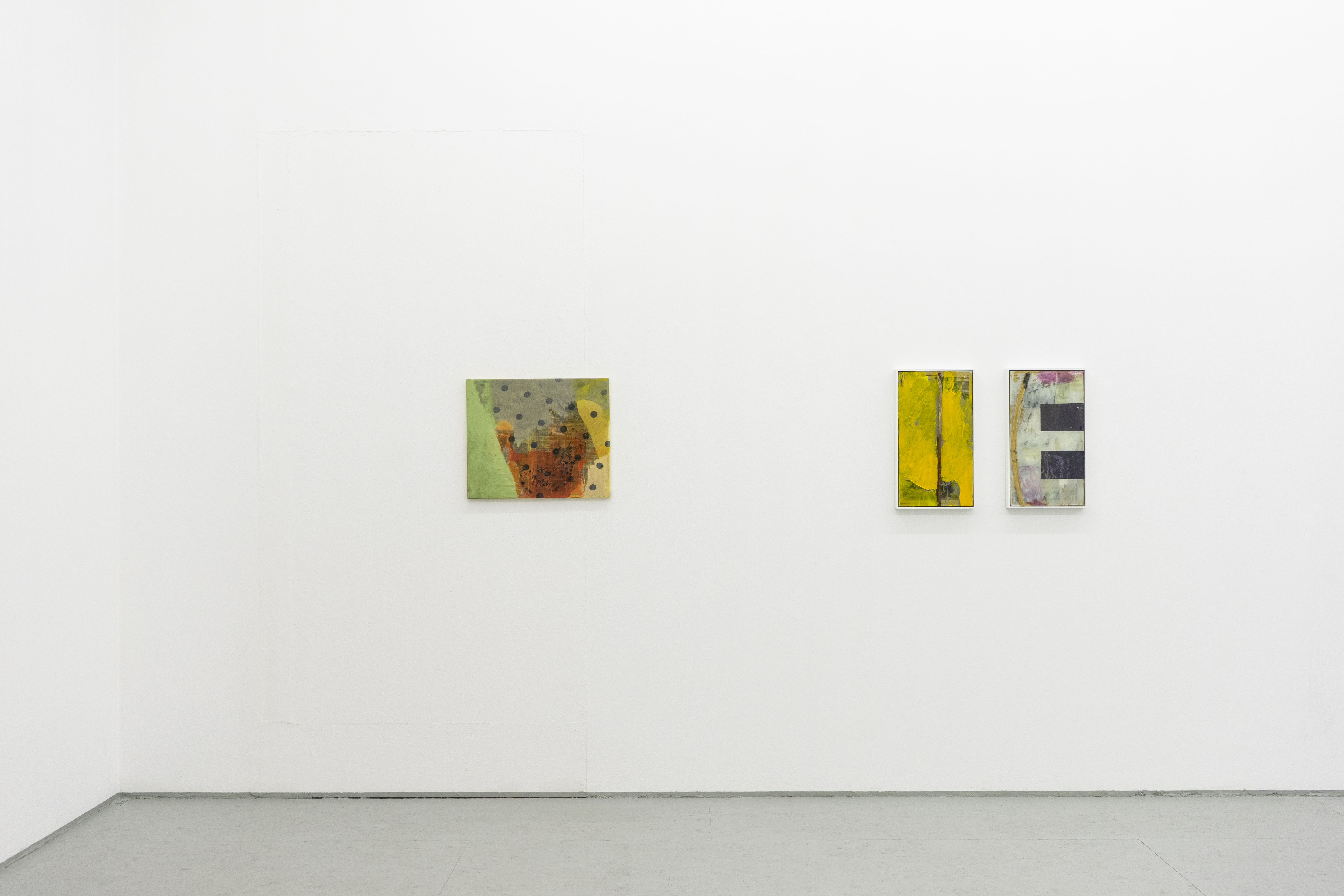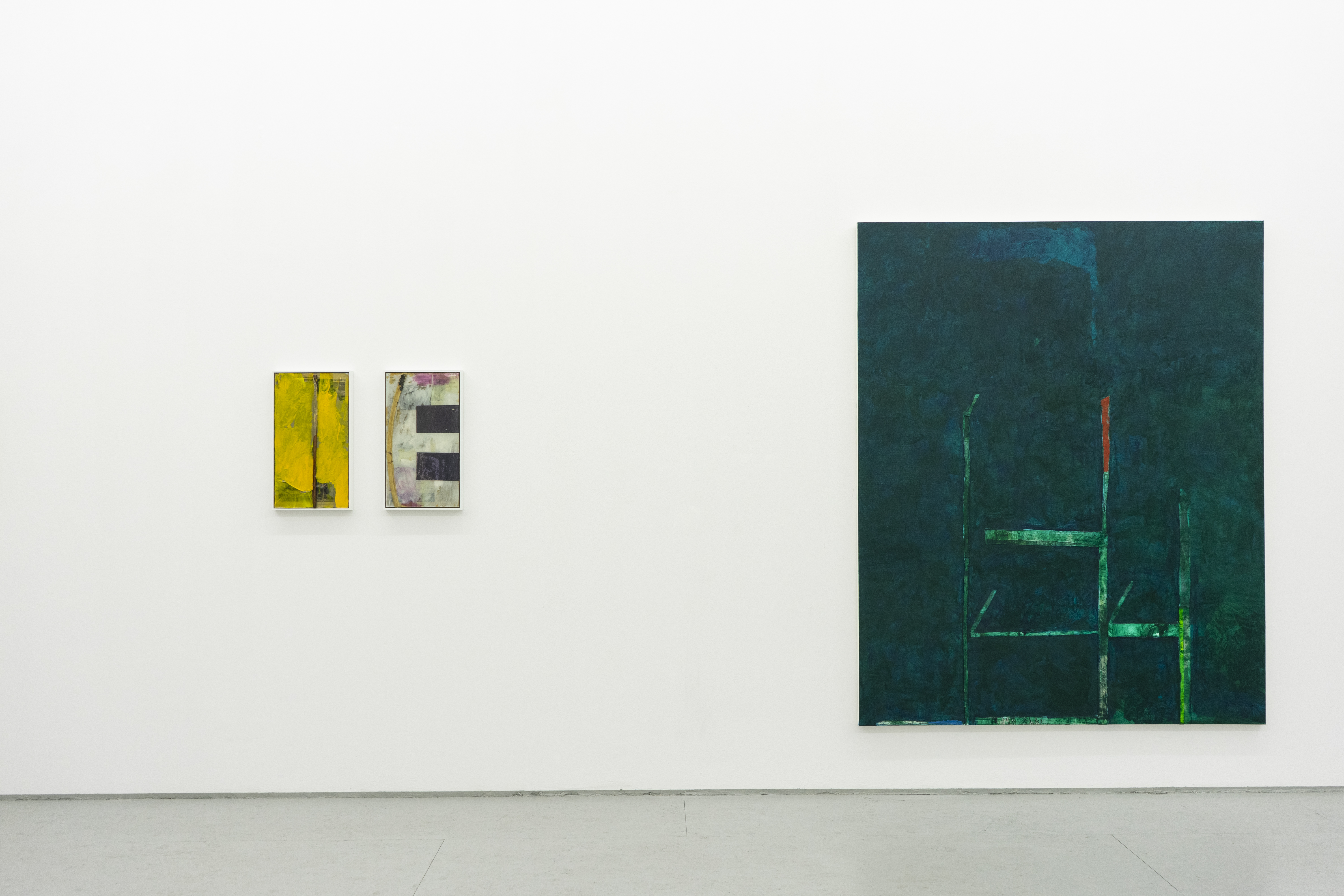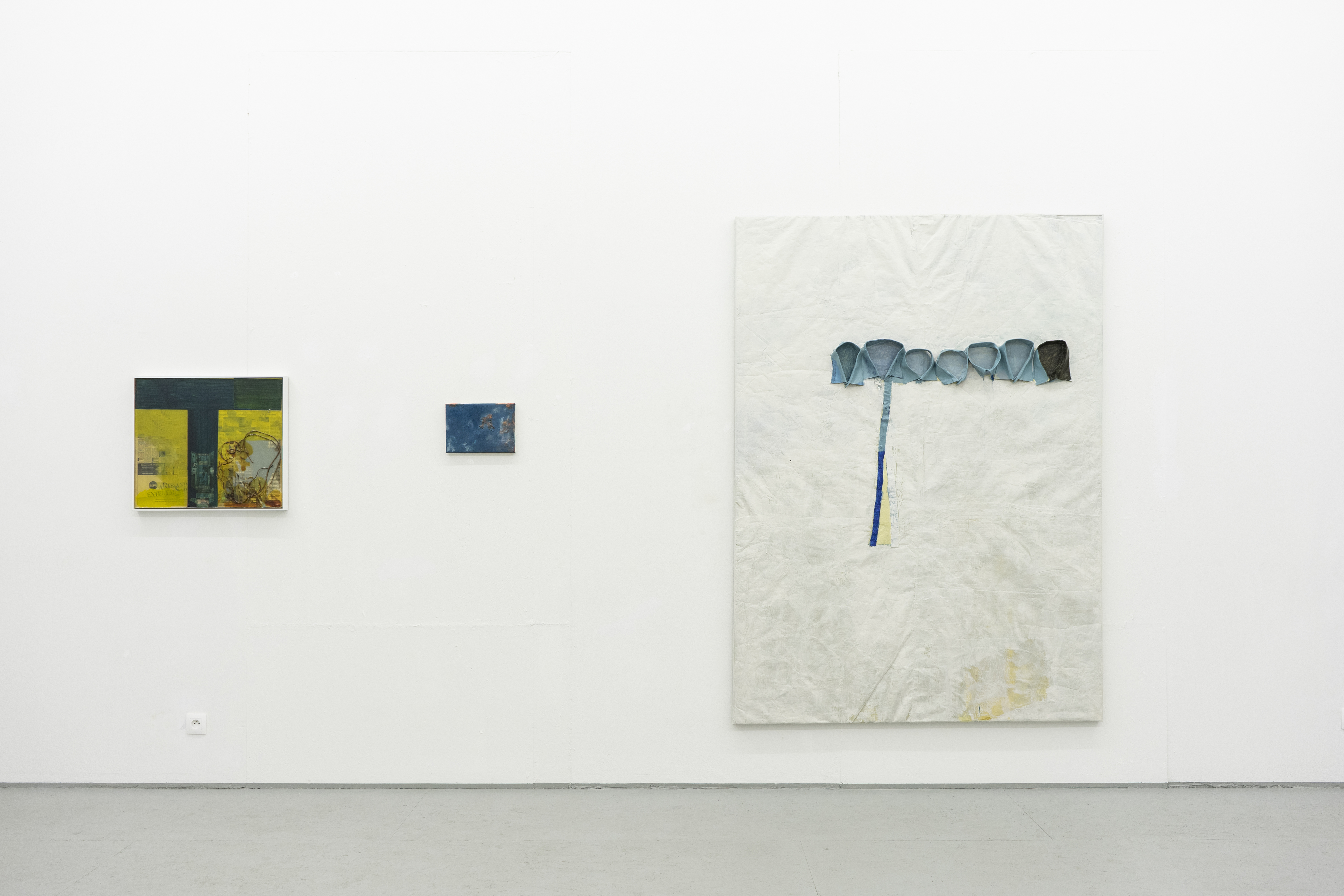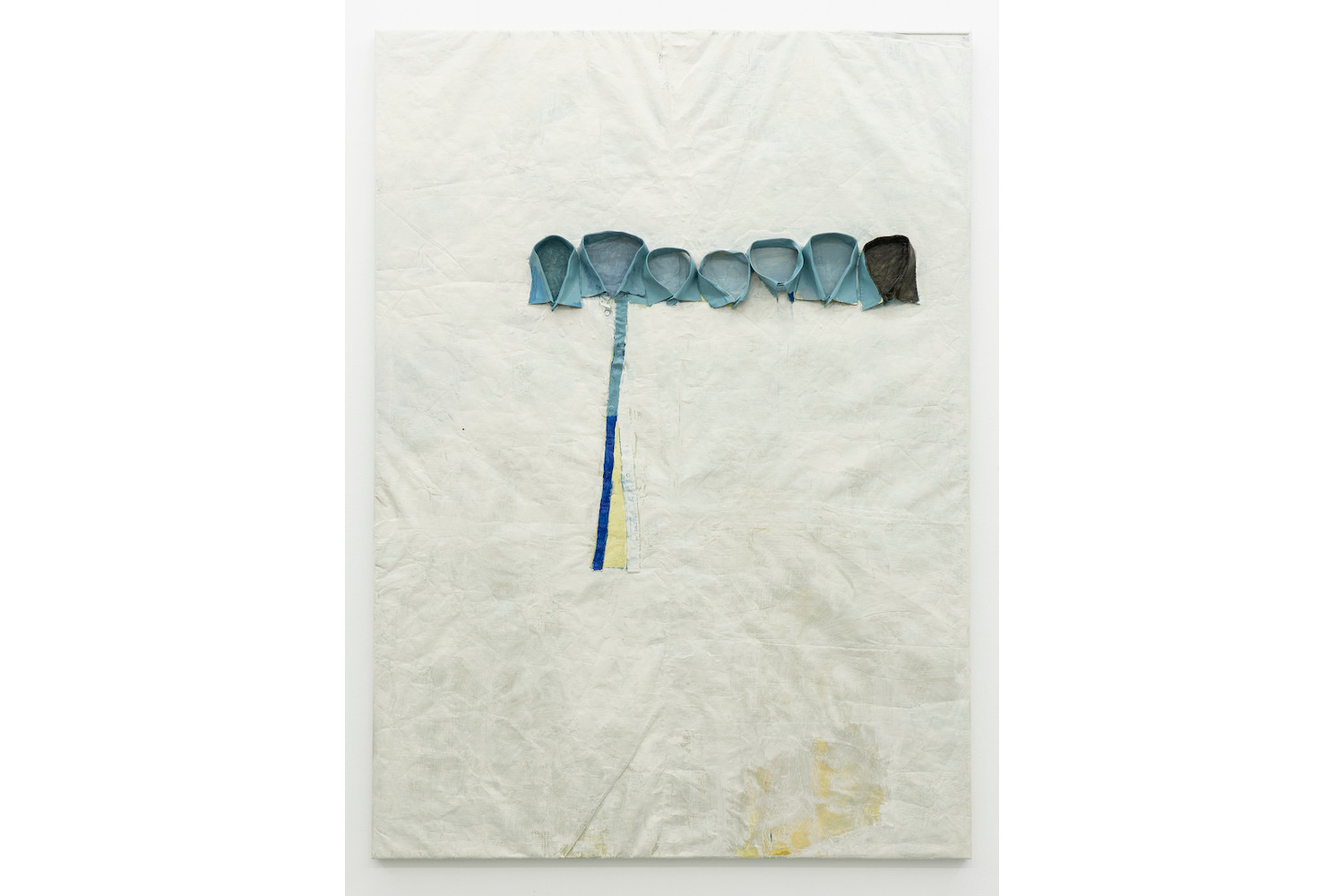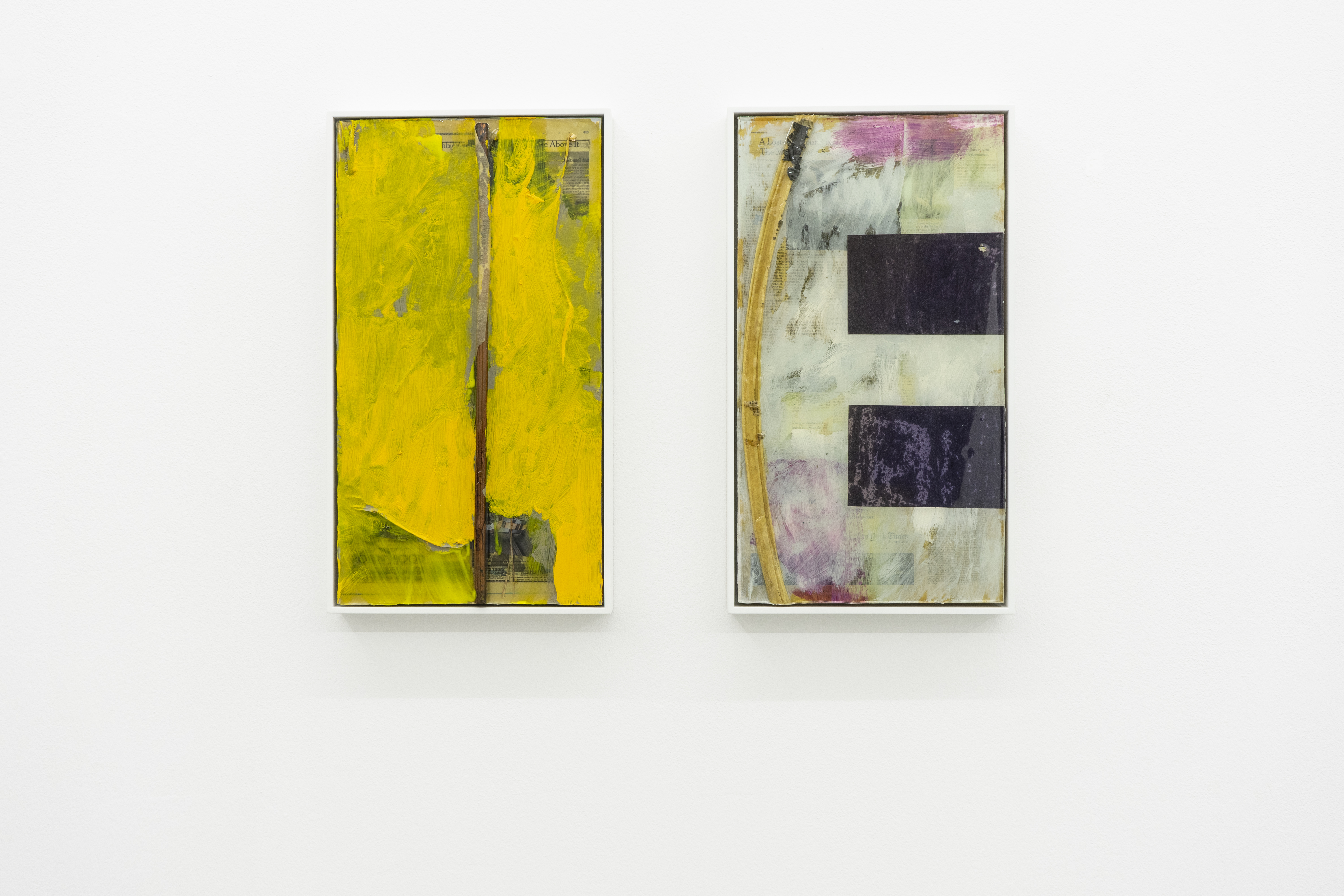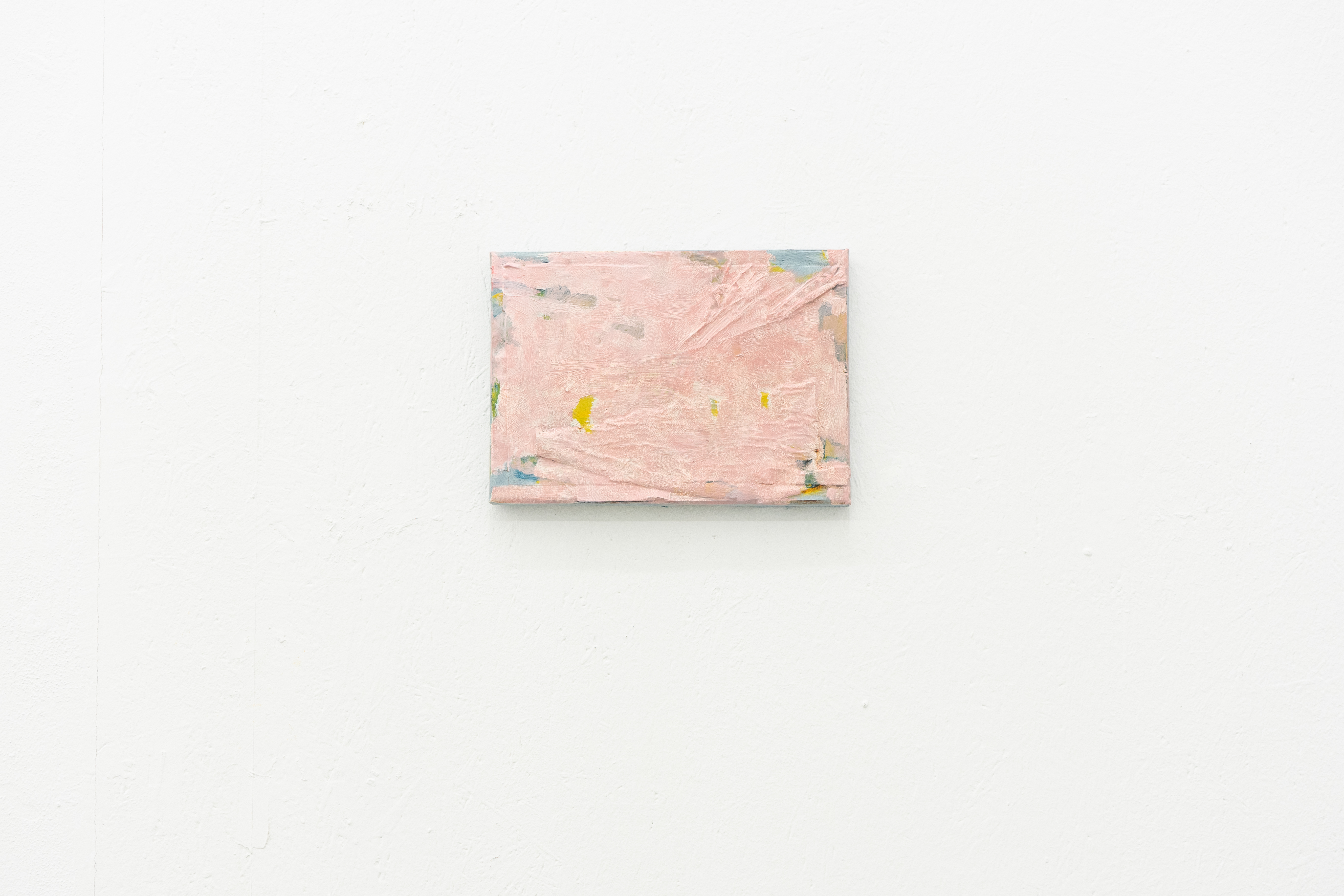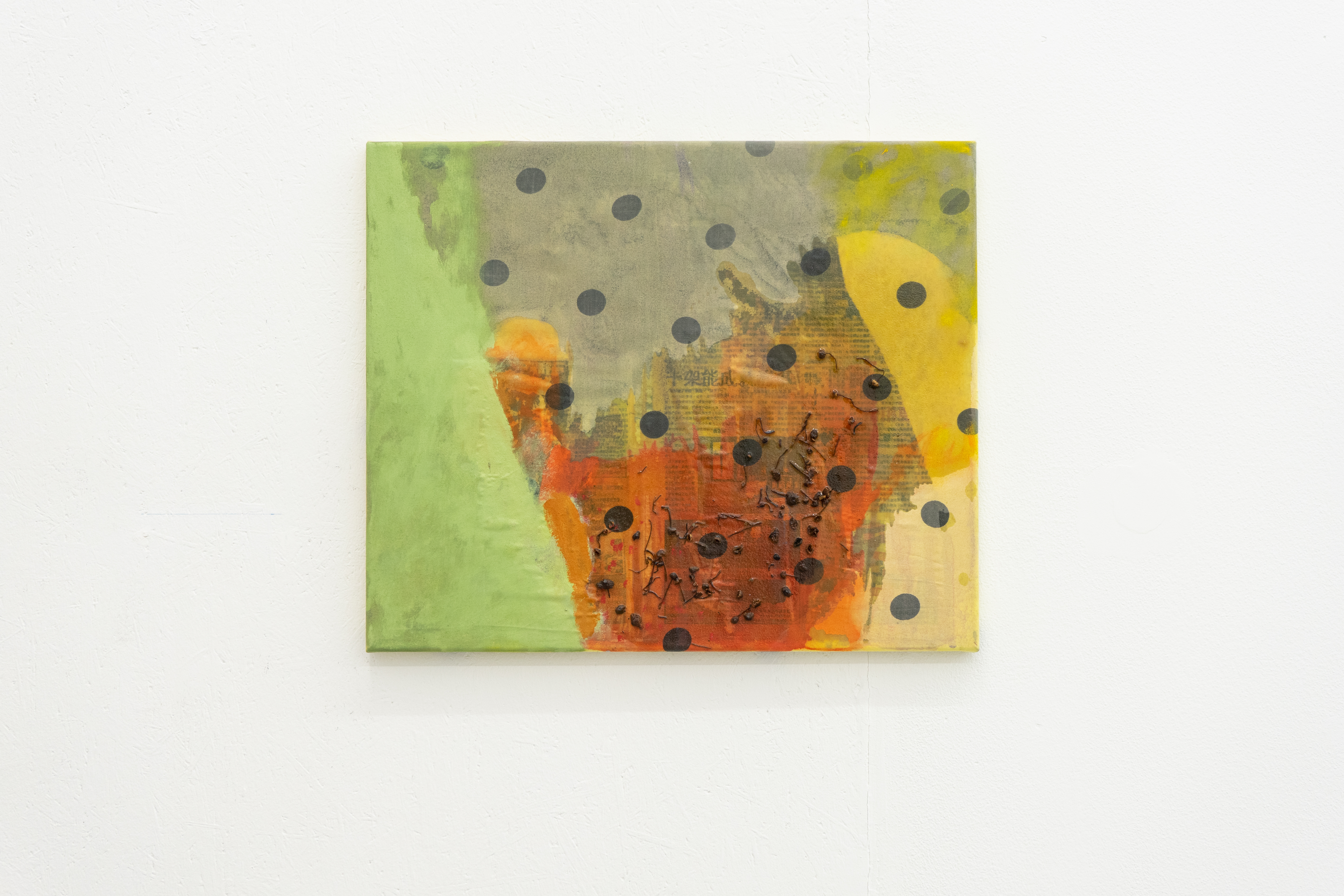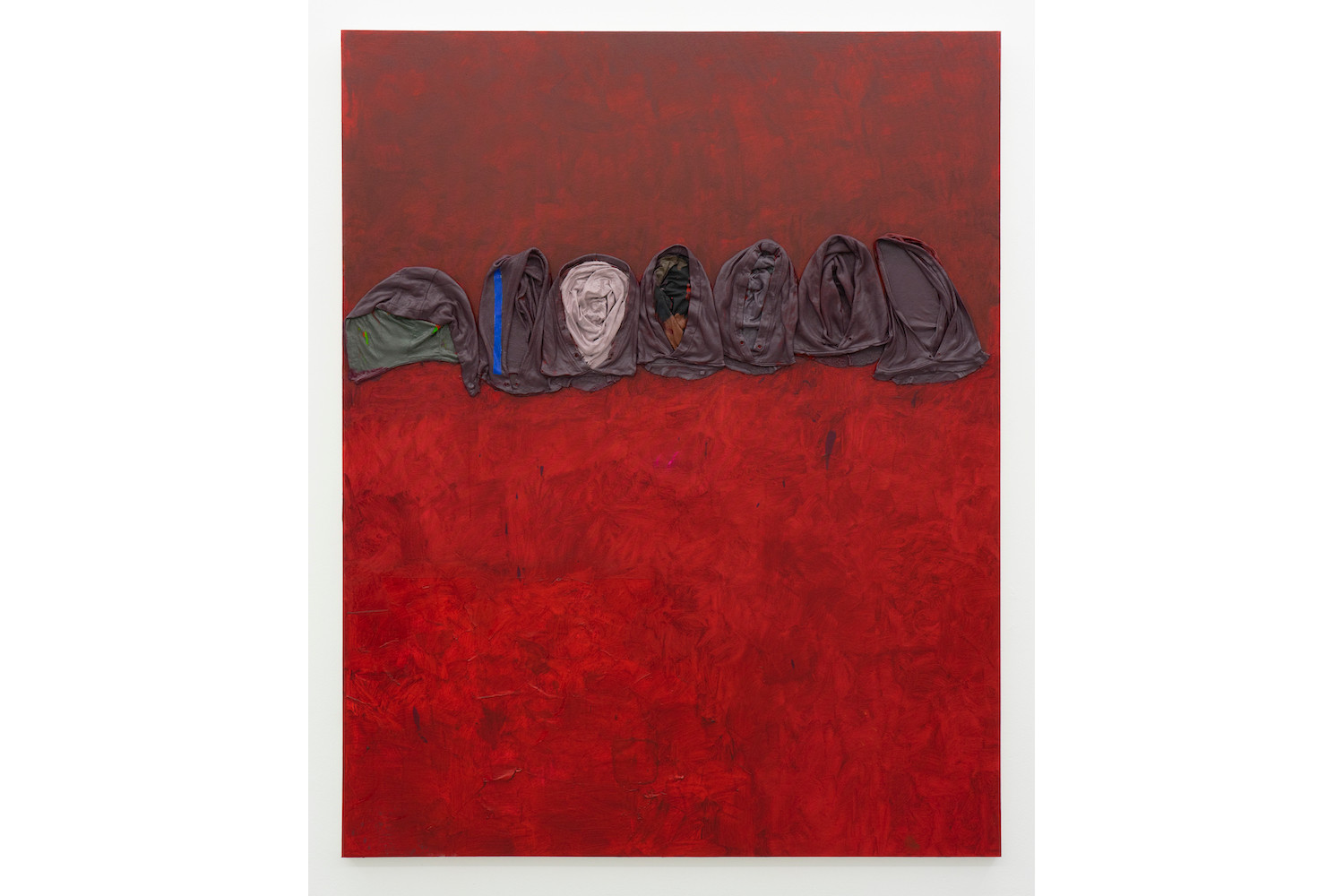One can already be sure that 2020 was a momentous year. However, what part and what kind of history it will become, marking the beginning or the end of an era, are still open questions. Jakub Czyszczoń’s “Pocket Knife Instead of the Alphabet” at Stereo, Warsaw, was never meant to be a retrospective, but provoked summative interpretations nonetheless. Although the show focuses on works conceived recently, in 2019 and 2020, it still presents an impressive variety of materials and procedures that the artist employs within his ongoing investigation of painting and the dynamics of the creative process.
The aforementioned assortment of techniques beckons the “alphabet” mentioned in the exhibition’s title, an abstract yet conventional concept that in turn confronts the notion of a “pocket knife” — a very concrete object with a particular weight and agency ascribed to it. Both terms serve as metaphors: the former implies the subject’s temporal distance and refers to drawing conclusions and observing patterns from seemingly random sets of occurrences; the latter stands for the direct experience of an event happening here and now.
Czyszczoń’s modus operandi, prominently demonstrated in the gallery space, includes layering, fragmenting, carving out, and connecting. It is certainly not as precise, disciplined, or bound by rules as the practice of medicine, but Czyszczoń’s practice clearly shares a common ground with science. A curiosity about the principles that determine an object’s function, an investigation of origins and processes, an urge to discover the essence of a phenomena: these are emblematic of the primal ambitions of both science and art. As indicated in the title, the metaphor here is twofold: the coloration of some of the works — like the fleshy pinks and beiges in Untitled (2019, 21 x 30 cm) — suggests thick coats of skin, establishing a very formal, direct connection to a clinical inquiry. On the other hand, the way three-dimensional elements (twigs, fragments of previous works, pieces of cardboard) are merged with subsequent paintings (attached to the background with resin and covered with copious amounts of paint) recalls the textures and tints of a scientific curio.
Czyszczoń’s works are like portraits of eerie creatures, to which the artist serves as medium, conveying to the viewer their unique biography. This animistic interpretation is further encouraged by a duet of outstanding pieces: two colossal paintings, one in pale blue hues, the other colored with crimson and soiled red (both Untitled, 2020), which appear as opposite wings of an altarpiece. Both works feature fragments of clothing — blue, formal collars and dark brown hoods — arranged in an isocephalic composition. The fabric remnants have been taken out of their material and symbolic frameworks, their function dismissed, their original meaning washed away. Set together with the two types of metaphors shaping the concept of the exhibition, these textile objects, fused with the paintings and fossilized in epoxy resin, might be read like a threat or a promise.


